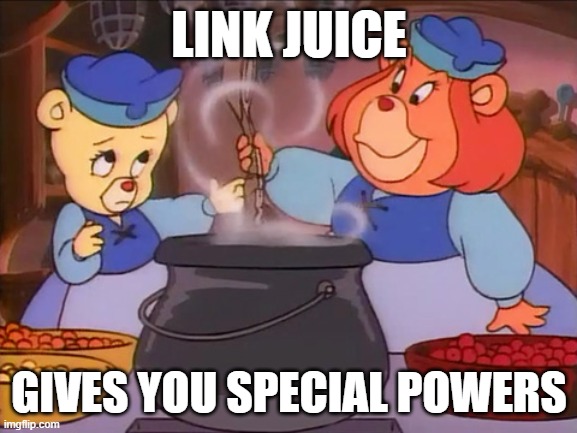
Business-to-business (B2B) companies face unique marketing challenges like:
- Standing out from the competition
- Complex sales funnels
- Long sales cycles
- Finding unique ways to connect with target audiences
- Creating content that guides prospects through their sales funnel
There’s one marketing strategy that successfully deals with all these challenges when implemented properly, and that’s SEO.
That said, it’s no wonder why SEO is the #1 way that B2B companies promote their products and services.
According to Sagefrog’s 2023 Marketing Mix Report, SEO is the most popular marketing tactic amongst B2B marketers, and the B2B SEO case study we’re about to share perfectly illustrates why that is.
This is the story of how we were able to increase a B2B client’s organic traffic by 787%, get them ranking in the top 10 for 1,500+ relevant keywords, and build thousands of valuable backlinks for their most important pages.
The kicker?
We did it entirely through link outreach.
That’s right; no web copy or content creation was necessary for us to achieve the aforementioned results.
This case study is also a testament to the massive impact high-quality backlinks have on a website’s search rankings and overall online visibility.
Read on to learn how we catapulted our client’s organic traffic into the stratosphere (and how we can do the same for you).
The Client: A PDF Generation Library for Web Developers
Our B2B client operates a PDF library that runs on the C# programming language.
It’s a powerful toolkit for web developers that lets them generate, read, edit, sign, and save PDF files in the .NET framework.
Without getting too technical, they license their library out to developers to use in their C# projects.
Despite the quality of the clients’ service, they were being overshadowed by competitors in search engine results, especially Google.
They needed a way to boost their online visibility and establish themselves as a major player in the PDF library space, and they knew SEO was their ticket to achieving both goals.
After doing some research online, they came across some of our rave reviews, and decided to get in touch with our team.
Mind you, this was back in late 2018, so we’ve been working with this client for quite a while now (67 months, to be exact).
During our consultation, the client gave us the rundown of their situation:
- They were producing top-tier blog content that, while extremely well-written, wasn’t bringing in enough traffic.
- Their website was in desperate need of high-authority backlinks from reputable websites in their industry.
- They weren’t ranking for important industry keywords yet.
Since they had diverse goals, a complex sales funnel, and a lengthy sales cycle – we decided that a Star SEO’s campaign would work out best.
Getting set up with a STAR SEO's campaign
Each client gets hooked up with a dedicated campaign manager who develops a long-term gameplan to ensure success.
Our clients love Star SEO because it’s truly a ‘hands-free’ service.
We’ll handle your SEO for you so that you can focus on running your business instead, which is exactly what took place with our B2B client.
They had enough going on managing their PDF library and creating top-tier blog content, so we took the wheel for their SEO.
Star SEO’s campaigns also use a combination of our SEO products to help clients achieve their goals.
However, in this case, we determined that we only needed one of our products to help them dominate the search results – and that was Link Outreach.
This is because we knew high-value backlinks were what the client needed from us to achieve all their goals (and then some).
Since they were already creating outstanding blog content on a regular basis, we didn’t need to provide any content of our own. Their website was also immaculate, so we didn’t need to tighten up or optimize their web copy.
Building backlinks was the name of the game for this SEO strategy, so we got ready to start sending lots and lots of outreach emails.
Also, the campaign lasted 67 months in total, which comes out to approximately five and a half years.
Nearly every month of the campaign included a 14-pack of link outreach orders, which is a whole lot of link-building.
The Importance of Backlinks for Ranking on Google
Before we continue any further, let’s explore why backlinks are such an important ranking factor on Google (and other search engines, but Google places the most importance on backlinks by far).
A backlink is a link on an external website that directs back to your site.
On Google, backlinks act as ‘votes of confidence’ for the quality of your content. The idea is similar to how term papers cite academic journals to back up their claims. If other websites that Google already trusts are linking to your content, it signals to Google that your content is also trustworthy, accurate, and high-quality.
This sums up why building backlinks has a positive impact on a website’s search rankings.
The more backlinks you have coming from high-quality, relevant websites in your field, the more Google will trust that your content is worthy of higher rankings.
9 times out of 10, if a client we’re working with is getting outranked by a competitor, it’s because the competing website has stronger backlinks.
The game then becomes closing the gap by building more high-quality backlinks than the competition.
This is link-building 101, but it explains why link outreach was our primary focus for this B2B client’s SEO strategy.
The SEO Audit: Getting Our Footing
Every Star SEO’s campaign kicks off with a comprehensive SEO audit, and we have a very good reason for this.
The last thing you want to do with SEO is get ahead of yourself, as it can cause you to miss foundational mistakes that negate your efforts.
For example, let’s say we forgo an audit and start building backlinks to one of the client’s most important blogs – failing to realize that two versions of the blog actually exist (which is known as duplicate content in the SEO world).
This confuses Google’s algorithm because it doesn’t know which version of the blog to rank in its search results, which usually causes both versions to disappear from the search results entirely.
Therefore, if we started putting in the hard work necessary to build backlinks to the blog, it wouldn’t matter because the content isn’t even ranking.
That’s why it’s imperative to begin every SEO campaign with a thorough audit, regardless of the goals involved.
What takes place during an SEO audit?
We analyze:
- On-page SEO factors like keyword usage, placement, and metadata
- Technical SEO factors like page loading speed, broken links, and duplicate content
- Site architecture and URL structure
- The website’s backlink profile (and its quality)
- Any keywords they’re currently ranking for and in which position
- How much organic traffic they’re generating (and from where)
We have more than a few tools to help us out during the audit process, most notably Google Search Console (GSC) and Google Analytics (both of which the site owner has to provide us access to).
GSC lets us look at a website’s keyword position rankings, organic traffic, and clicks/impressions.
Google Analytics is more about analyzing a website’s demographics, such as its geographic location, and identifying the main sites that direct users to it.
Identifying Easy-Win Keyword Opportunities during the Audit
Once all the technical and user experience issues are squared away, we move on to looking for easy-win keyword opportunities for the client.
What are those?
Easy-win opportunities are keywords that the client’s site already ranks for, just not very high. The good news is that with some optimizations, it’s pretty easy to get these keywords ranking higher (sometimes even in the top 3).
The reason we go out of our way to look for easy-win keywords is they provide speedy results.
Google’s Crawling and Indexing Process
SEO is a long-term process that takes some time to start generating steam, especially for newer, more obscure domains. This is because you have to wait for Google to crawl and index your content before your optimizations will impact your rankings.
It takes quite a bit of energy for Google’s bots to crawl and index websites, which is why they have crawl budgets.
There’s also a tier list involved with the indexing process that’s split into high, medium, and low-priority levels.
High-priority sites are the most popular sites on the web (think Amazon and Wikipedia), so Google recrawls and indexes them most often.
Medium priority sites are still popular, but not on the level as legacy websites like Amazon. Low priority websites are obscure (or brand-new) domains that are rarely indexed.
This means low-priority sites may have to wait 6 to 12 months before their content is recrawled and reindexed, which can be frustrating.
Easy-win keywords mitigate this issue because the content is already indexed and ranked. This means it won’t take nearly as long for optimizations to impact search rankings.
As a result, easy-win keywords can provide ranking boosts within a few weeks instead of months, providing clients with some much-needed traffic generation early on in their campaigns.
The Impact of Easy-Win Keywords
Our B2B client had quite a few easy-win keywords that we happily capitalized on as soon as possible.
This is because, as stated before, they had an extremely active blog that covered topics relevant to their target audience.
They were bound to start ranking for web developer-related keywords due to their blogging efforts, which was exactly the case. We honed in on keywords ranking in positions 4 – 30, which are prime easy-win keyword opportunities.
Which optimizations did we make?
The usual fare, but that’s usually all it takes with easy-win keywords, such as:
- Adding the target keyword to the title tag, H1 header, metadata, and first 100 words of the content
- Making sure image alt text contained target keywords
- Beefing up pages with thin content (less than 1,000 words)
- Adding internal links to pages with the most backlinks (to pass link juice)

What’s link juice? Whenever a web page has valuable backlinks, it gains what SEOs call ‘link juice,’ which means ranking power (or authority). Whenever you include an internal link to one of your pages with a lot of link juice, it will transfer some of the juice to the linking page. This transfer of authority is a powerful SEO tool that we use all the time to boost certain pages without having to build new links for them.
Campaign Strategy: Link Outreach All the Way
Once the audit was complete, it was time to start building links like our lives depended on them.
As stated previously, the client ordered 14-packs of Link Outreach every single month.
What does link outreach entail?
We’re glad you asked.
While other SEO agencies stick to cold outreach emails using generic (and boring) templates, we take a far more nuanced approach to the process.
Also, we’re extremely picky with the websites that we target for backlinks, which is part of why our product yields such outstanding results.
For every backlink opportunity, we analyze the website’s:
- Domain Authority (DA) score. Domain Authority is a metric developed by Moz that approximates a domain’s likelihood of ranking in Google’s SERPs. It looks at a domain’s backlink profile AND general SEO performance (including on-page factors).
- Domain Rating (DR). Domain Rating is another metric for measuring the ranking power of a domain, but this one was developed by Ahrefs. Also, DR only looks at the strength of a domain’s backlink profile, and nothing else.
We take a look at a domain’s DA and DR scores to ensure it’s worth pursuing for our client.
Also, each client has the freedom to set a preferred amount of monthly traffic for each backlink prospect. That way, you’re guaranteed to receive a backlink from a website that’s as popular as you want.
Building Relationships with other sites in the Web Developer Space
In addition to the rigorous way we vet backlink opportunities, our outreach approach is equally as ambitious.
Instead of treating each backlink target as a one-and-done deal, we always aim to forge long-lasting relationships with relevant bloggers, media outlets, and website owners.
That’s because a positive relationship will lead to multiple backlinks (and other marketing opportunities) instead of just one.
Yet, for relationship-based link-building to work, we have to engage in personalized outreach.
For our B2B client, we did some in-depth research into major players in their industry. We read influencer posts, looked at their LinkedIn profiles, and recognized areas where we shared common ground.
From there, it was about drafting extremely personalized emails that exemplified our knowledge of the prospect’s website and content.
We would make a point to mention specific pieces of content that we thought were especially helpful or thought provoking.
Sometimes, we would engage with backlink prospects for months before even bringing up the idea of adding a backlink on their site.
This paid off in the long run, as we built numerous relationships with influencers in the web development world, something which led to tons of valuable backlinks for our client.
The Results: Insane Organic Traffic Generation, Over 1,500 Top 10 Keywords, Thousands of High-Quality Backlinks
All that outreach paid off, as we were able to boost the client’s organic traffic by 787%.
It’s important to note that we saw a rapid increase in traffic and keyword generation within the past year and a half.
Here’s a look at their organic traffic and keywords in January of 2023:

Compare those numbers to June 2024:

As you can see, their organic traffic began to skyrocket in March of 2023, and it hasn’t let up yet! Their traffic grew from an average of 2,045 visitors to 18,151 (and still climbing)!
They’re also ranking for 378 keywords in the top 3, which are directing tons of users to their industry leading blog content.
Here’s a glimpse at the client’s main keyword wins (without giving away too much):
These are primarily TOFU (top-of-the-funnel) keywords that direct users to our client’s blog content (which contains CTAs to land conversions and leads).
This campaign was a perfect example of our services working in tandem with a client’s already successful content creation. Our link outreach was the perfect compliment to the client’s in-depth blog content, and it finally got the client the recognition (and traffic) they deserved for their hard work.
The relationships that we built led to countless link placements on authoritative websites in the web development niche, which helped our client rank in the top 3 for so many crucial industry keywords.
Using B2B SEO to Dominate Your Niche’s Search Results
Our client’s website is still tearing up the charts, so to speak.
SEO is a gift that keeps on giving when done properly, which is why our client is continuing to generate more traffic than ever before.
B2B SEO is complicated, so why not let us handle it for you?
If you’re ready to take your B2B company to the next level, don’t wait to sign up for a Star SEO’s campaign to achieve results similar to those of the client mentioned in this case study.


